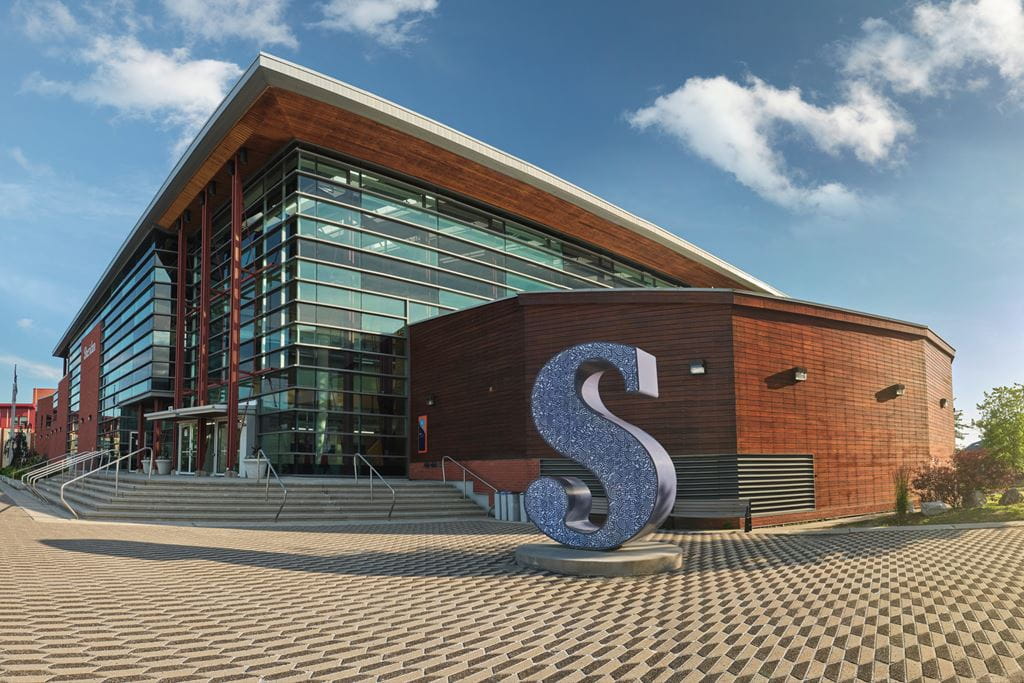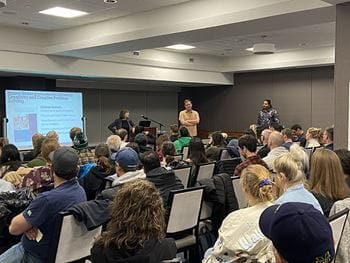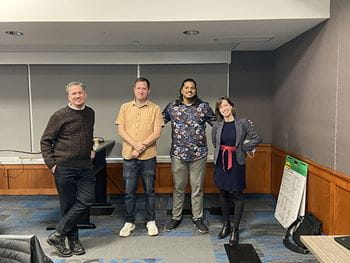
Sheridan partners with local high school to enrich curriculum with creativity and innovation
 by Marianne Sy-Lucero – Jul 4, 2023
by Marianne Sy-Lucero – Jul 4, 2023 Finding unique solutions that are built on creativity and innovation is increasingly becoming an in-demand skill needed in today’s workforce—and it all begins in the classroom.
Professor and coordinator of Sheridan’s Applied Creativity and Innovation graduate certificate program Dr. Joel Lopata explains that it’s more important than ever for students to have creativity skills. “There’s a priority, societally, on developing future proof and transferable skills that include creative problem solving.”
As it prepares to launch its Applied Creativity and Innovation program, Sheridan’s Faculty of Humanities and Social Sciences is not only looking to instill the principles of creativity studies in postsecondary students — it’s also supporting teachers in local high schools looking to integrate creativity concepts into their curriculum.
 Sheridan’s School of Humanities and Creativity has collaborated with Oakville-based Thomas A. Blakelock High School to host two professional development workshops for teachers and administrators with a strong interest in incorporating creativity principles into their curriculum. Both workshops welcomed 80 participants from the high school, with the first one being held at Sheridan’s Hazel McCallion Campus in Mississauga in November 2022 and the second at Thomas A. Blakelock High School in February 2023.
Sheridan’s School of Humanities and Creativity has collaborated with Oakville-based Thomas A. Blakelock High School to host two professional development workshops for teachers and administrators with a strong interest in incorporating creativity principles into their curriculum. Both workshops welcomed 80 participants from the high school, with the first one being held at Sheridan’s Hazel McCallion Campus in Mississauga in November 2022 and the second at Thomas A. Blakelock High School in February 2023.
The workshops gave participants an opportunity to explore approaches and strategies that educators can use to intentionally provide their students with creativity-supportive learning experiences.
“Training, educating and supporting learners in the development of their creativity and creative problem-solving abilities starts in the classroom,” says Lopata. “This includes their ability to innovate, market themselves and come up with new solutions to sticky issues or to complex ill-defined problems in society.”
 As part of the workshop, Sheridan School of Humanities and Creativity Associate Dean Dr. Genevieve Amaral and creativity professors Chris Ambedkar, Dr. Nathaniel Barr and Lopata facilitated several group and individual creative activities, including a brainstorming session that asked participants to identify different uses for a Coca-Cola bottle. These hands-on learning experiences helped many of the teachers realize they were already incorporating similar activities in their lesson plans, and gave them the opportunity to engage in further discussions around new strategies and applications.
As part of the workshop, Sheridan School of Humanities and Creativity Associate Dean Dr. Genevieve Amaral and creativity professors Chris Ambedkar, Dr. Nathaniel Barr and Lopata facilitated several group and individual creative activities, including a brainstorming session that asked participants to identify different uses for a Coca-Cola bottle. These hands-on learning experiences helped many of the teachers realize they were already incorporating similar activities in their lesson plans, and gave them the opportunity to engage in further discussions around new strategies and applications.
“Blakelock teachers are already implementing creative experiences in their classrooms. It was fascinating to see that across subject areas,” adds Ambedkar. “From maths, to French, to the arts, their approaches were similar in that students were given opportunities to discover answers to complex questions through creativity.”
With support from facilitators, participants also developed strategies to empower students to be more creative, enabling them to personalize and differentiate their instruction for individual students.
At all levels of education, students enter the classroom with varying backgrounds that can affect the way they learn. Lopata explains that variables such as previous knowledge on a subject, cultural background and exceptionalities and disabilities contribute to an individual’s learning experience.
“One thing that benefits everybody is to have differentiated instruction, so that everybody can learn where they are and take their next steps, when necessary,” says Lopata. “High school teachers are experts in this. This is what they do 24/7, but we’re here to showcase how creativity plays a role and how they can integrate it.”
Sheridan is committed to continuing its support of Thomas A. Blakelock High School and the Halton District School Board’s integration of creativity and innovation education into their curriculum, and is looking forward to inviting Blakelock students to Sheridan campuses for Creative Problem-Solving Days in the fall. “It was an absolute thrill to collaborate as a team and to work with the knowledgeable and engaged teachers at T.A. Blakelock High School,” said Lopata.
As a next step, Lopata and the Faculty of Humanities and Social Sciences are developing an Additional Qualification (AQ) course in Educational Leadership with a focus on Creativity and Innovation. AQ courses are accredited by the Ontario College of Teachers (OCT) and provide professional development opportunities for in-service Ontario teachers.
“We want to thank [Sheridan] again for a fantastic session of learning and sharing. It was a great continuation of the work that we had started in November, and we really appreciated the time you took to be with us,” added Paul Dawson, Thomas A. Blakelock High School principal, following the professional development workshop in February. “The feedback from staff was very positive. Many have already begun thinking about ways to implement what was shared and are excited to continue collaborating with the team at Sheridan.”
Media Contact
For media inquiries, contact Sheridan’s Communications and Public Relations team.


.jpg?rev=f6966bda90cf4d6b95706cb303adb861&w=320&hash=86204A60517B45CAB340354AD5EB7036)
